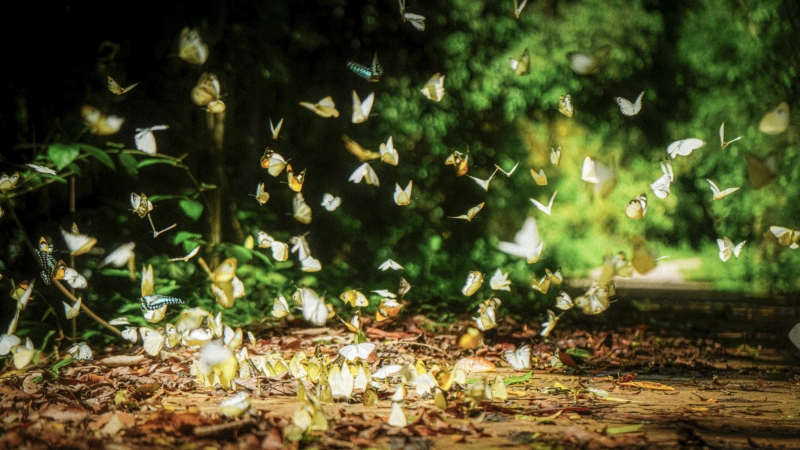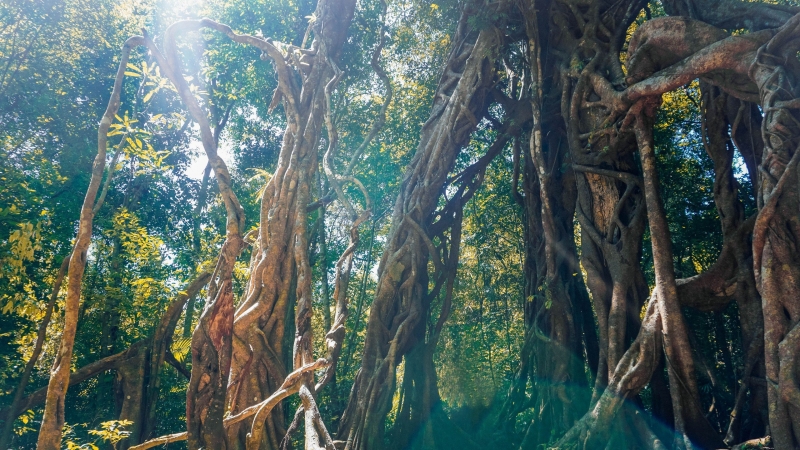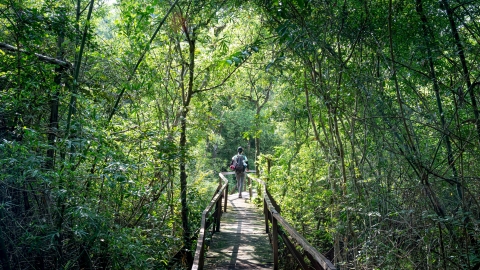The forest always exudes a hidden, growling, sometimes threatening aura that stimulates those with a spirit of adventure, who like to take risks and hate monotony. Forests and rivers are the source of human life. I like the mountains and forests more than the ocean, perhaps partly because the ocean is vast and fierce but quickly brings a feeling of monotony. The ocean contains countless beautiful, precious, and wonderful things... but the ocean hides all of those things in its heart, not openly expressing, sincere, and ready to give everything like the forest.


The forest always exudes a hidden, growling, sometimes threatening aura that stimulates adventurous people who like to take risks and hate boring monotony.
For a long time, I have had a wish, not knowing how far it will go, which is to set foot in all 34 National Parks of this country. Cat Tien is the 16th place in the journey to try to “optimize” this plan.
Cat Tien Forest was once famous for the one-horned Javan rhinoceros, but recently it has become more well-known because on June 21, 2024, the International Union for Conservation of Nature (IUCN) officially recognized Cat Tien National Park as the 72nd protected area in the world to achieve the IUCN Green List title after a comprehensive assessment process with the support of the United States Agency for International Development (USAID) through the Biodiversity Conservation Component of the Sustainable Forest Management and Biodiversity Conservation Project (VFBC).
The south of Cat Tien National Park is surrounded by the Dong Nai River, so when we came from Tan Phu District (Dong Nai), we had to cross a ferry. It was the rainy season, so the water flowed slowly, red with a very promising alluvial color. The river was not wide, but when the old ferry went so slowly, I sometimes wondered why it was standing still in the middle of the river, waiting for someone.
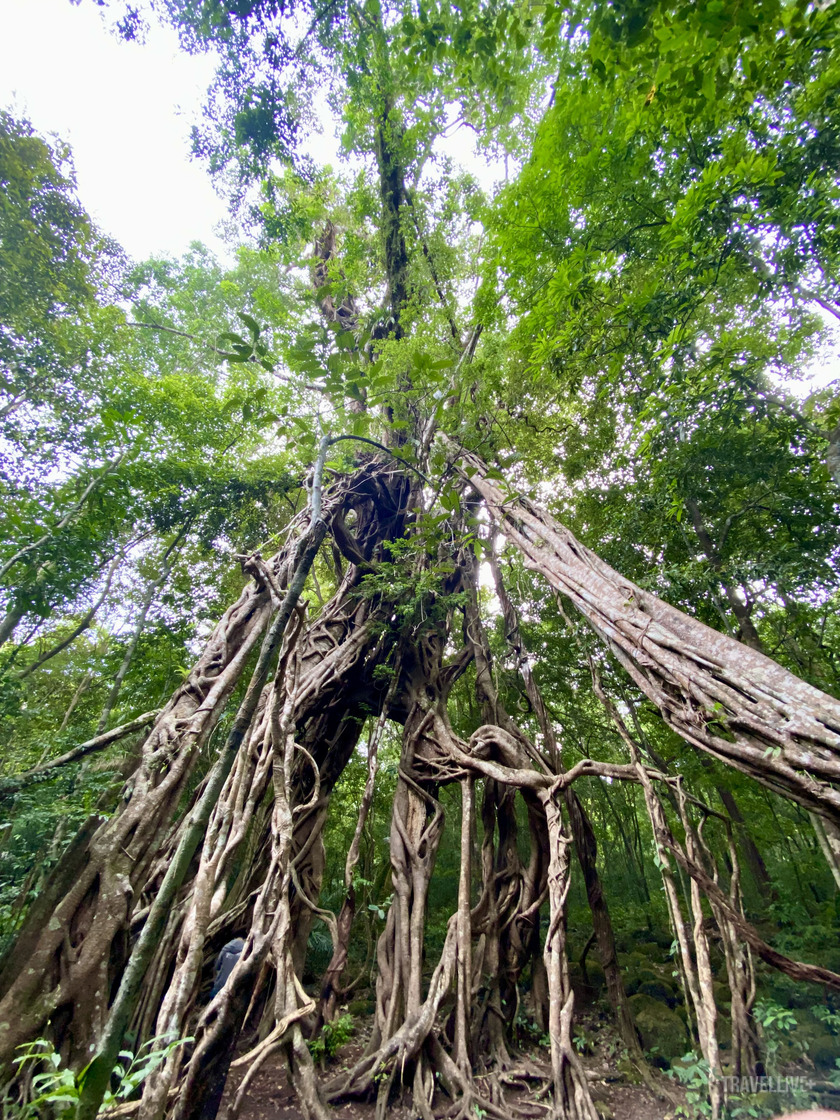
Cat Tien is the 16th place in the journey to try to "optimize" this plan.
Our first day's journey was to enter the forest gate, climb onto a truck with a bed and a seat like the one used on trams, then go around on the right side. The first stop was an ancient Tung tree estimated to be over 400 years old. The tree's roots were weak so they couldn't penetrate deep and had to spread out to find nutrients. So the tree trunk was measured from about 30 meters above the ground. Looking at this Tung tree reminded me of the ancient trees that grew in the temples of Angkor Wat and Angkor Thom in the past, the tree trunk with roots like giant pythons growing from the ruined walls of temples that had been abandoned in the deep forest for over 700 years!
The ancient white-flowered Lagerstroemia tree has five trunks close together but separate from each other. The Forest Ranger who was our tour guide showed us how to take a photo: use the selfie mode, place it in the middle of the trunk, and then press the button. The photo that comes out at first glance looks like a cave like this.
This time going to Cat Tien, I just found out that Lagerstroemia has another name, the "Cang Le" tree. I have read it in novels about the Vietnam War by many famous writers, but only learned this information today. The ancient "Cang Le" tree usually has a white trunk, so in the past, soldiers who got lost in the forest or fell behind due to malaria would use the "Cang Le" tree to find their way back to their units and comrades.



The banyan tree has hundreds of trunks, and no one knows where its main trunk is. Coming here and listening to the explanation of the Cat Tien Forest Ranger, I learned that the banyan tree or si tree were originally parasitic trees. They grew on the trunk of the host tree, gradually sucking nutrients from the host tree, then grew up, covered and suffocated the host tree, killing it, then spread out and reigned proudly. Those bristling trunks were actually roots like octopus tentacles sucking blood. That's why they have names like: the unfaithful banyan tree, the strangling banyan tree.
The war between plants seems to be just as fierce as that between animals. The banyan tree or the si tree is like "the wolf sending its paws" at first. As for humans, needless to say, the war between humans is inherently the fiercest on this planet. The ancient banyan tree, seen from afar, looks like a scene from the movie Avatar. The ranger said that this banyan tree is about 900 years old, meaning it has been around since the Ly Dynasty! Everyone joked: If we come back here in 100 years, it will probably still be like this. Standing and looking at this banyan tree, we can see how small and short the life of a high-level primate (human) who always calls themselves this and that... is compared to Nature and Heaven and Earth.
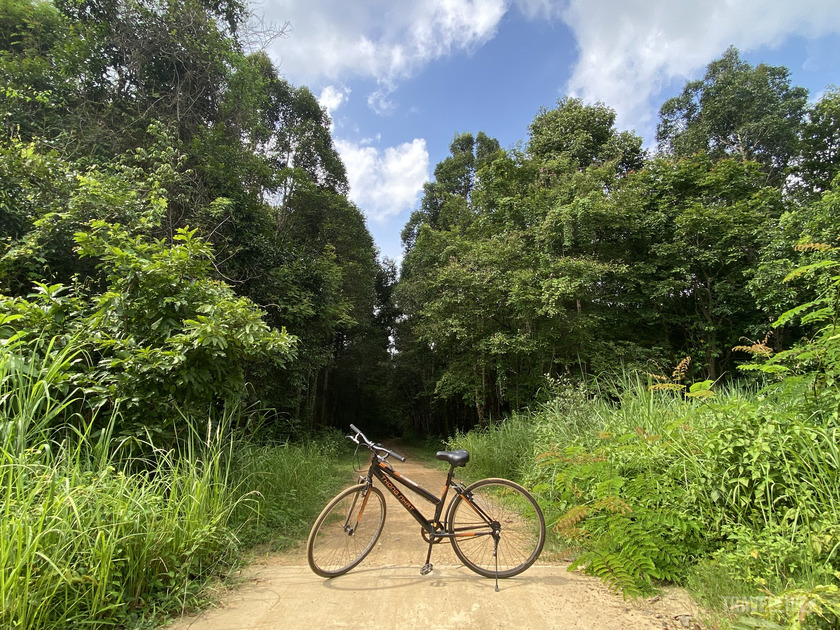
Leisurely cycling in Cat Tien
Night trip to see wild animals. The whole group sat on the truck rented in the afternoon. Everyone was asked to sit still, a driver drove, behind was a very high chair for a Forest Ranger to sit cross-legged holding a high-pressure lamp (don't know how much power, but every time it passed by his face, it felt like lightning flashed), scanning left, right, left, right, up and down to find wild animals for the visitors to see and admire. These Forest Rangers were really sharp-eyed, turning their hand to sweep a line and immediately seeing what was moving, several times they saw pythons, civets, even a pair of tiny birds sleeping together in the tree canopy, he had to use a green laser to help visitors pinpoint the location and know that it was an animal, not a plant.
The wild animals encountered were mostly deer and eland, foraging under the grasslands, some unknown grasses that were as high as an adult's chest. While sweeping the lights, the Forest Ranger explained, the wind was howling but his voice was clear and concise: Now do you understand why this province is called Dong Nai province?
Cat Tien is the only National Park in Vietnam that offers night safaris like this. It is said that there are 28 Asian elephants left and about 70 or 80 gaurs left.
The next morning's journey in Cat Tien, we rented bicycles from the forest entrance, were given a hat woven from rattan/bamboo or something. The round trip was 12.5 km. Never cycled in such a wonderful scenery. I must say: these were truly worth living!
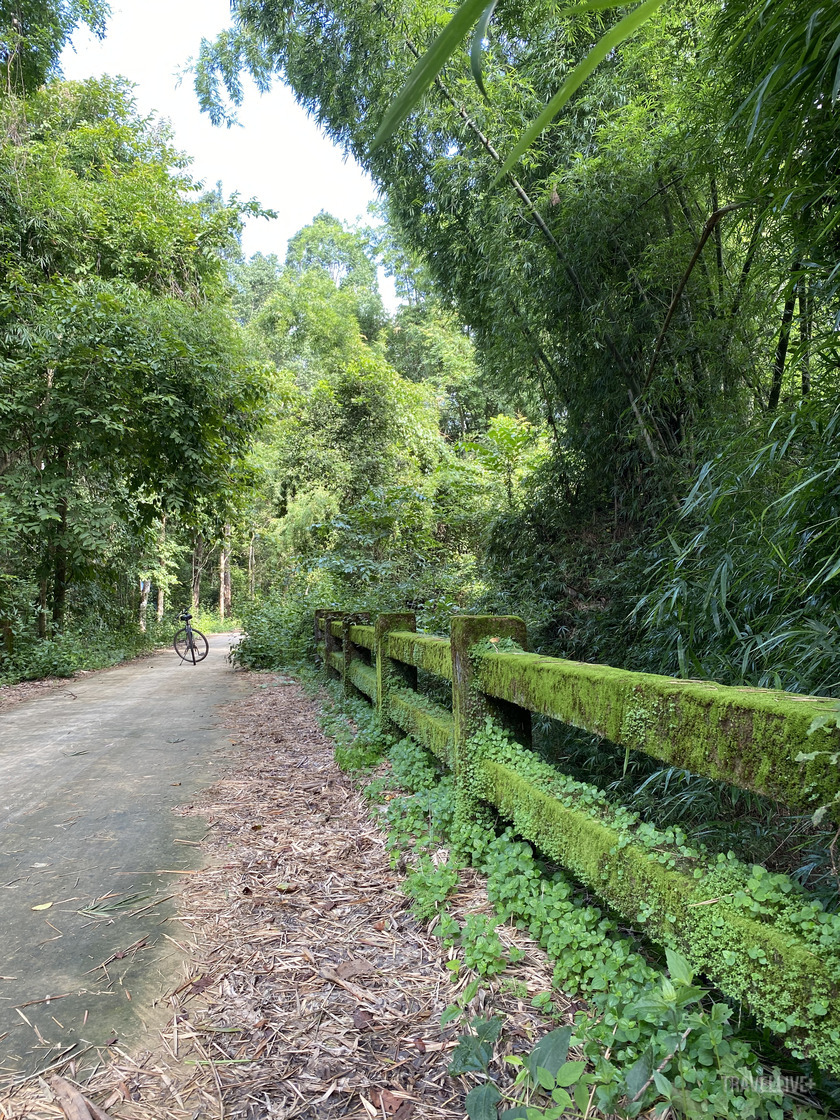
The bridge is covered with green moss
About 5 km from the entrance to the forest, I came across a bridge covered in green moss - not the usual green, but a lush, green like this. The moss, grass and shrubs covering the bridge reminded me of the freshest vegetable beds in Da Lat. The bridge was truly special, a bit surreal and typical of the tropical forest. The green moss probably came from two sources: the large canopy of trees that allowed rainwater to evaporate more slowly than in open areas, and the steam rising from the stream at the foot of the bridge.
Cycling from the forest entrance to the concrete road is 7.2 km. Everyone in the group called me to turn back, I tried to cycle on the dirt road for another 1 km but had to turn back because the surroundings were as quiet as a sheet of paper even though it was mid-morning, it felt a bit creepy. The forest was vast, only the sound of birds chirping and the croaking of small animals running under the grass, sometimes I saw douc langurs swinging from branch to branch above or squirrels running across the path. I regretted turning back because if I had been too eager to cycle, who knows if a python would have jumped down from an old tree and become famous tomorrow.
This is the boundary where the concrete forest road ends and the dirt road begins. Looking inside, it is so deep that I can clearly understand what the words "old forest" and "deep forest" mean. A whole clump of wild guava trees grows right next to the path, making me think of a ripe guava falling and the old guava seeds sprouting and growing into trees. Next to it is a termite nest, at first glance it looks like a pile of dirt, but after a while, standing and admiring it, it reminds me of a Cham statue carved in the shape of an Apsara dancer or something.
Cycling through the forest canopy that covers the path, wherever butterflies land on both sides of the road, they fly away. If it's like this in the summer, there must be even more butterflies in the spring. Passing by places like this, I suddenly remember the lyrics of the song "Green Fields" (Brothers Four): "Green fields are here, Heaven of grass and trees is where wild animals are playing in the sun, Here are the quiet streams basking in the bushes, Here are the cool streams gently reaching out to the valley...".
On the cycling route, I passed through beautiful forests like in Korean movies. But these were probably planted forests, so the trees were neat and not crooked like that. I also remembered the rows of ginkgo trees on Nami Island, where the famous movie "Winter Sonata" was filmed, which once made the hearts of many young Vietnamese people flutter.
I love to see these boys looking healthy, happy, agile, their faces and shirts drenched in sweat but full of enthusiasm cycling in the forest like this. It is a wonderful experience for the children to participate in trips like this, a more civilized and effective way of education. They will be physically trained, learn about Biology (animals, plants), learn about Geography and History, learn soft skills to become a well-rounded person in the future.
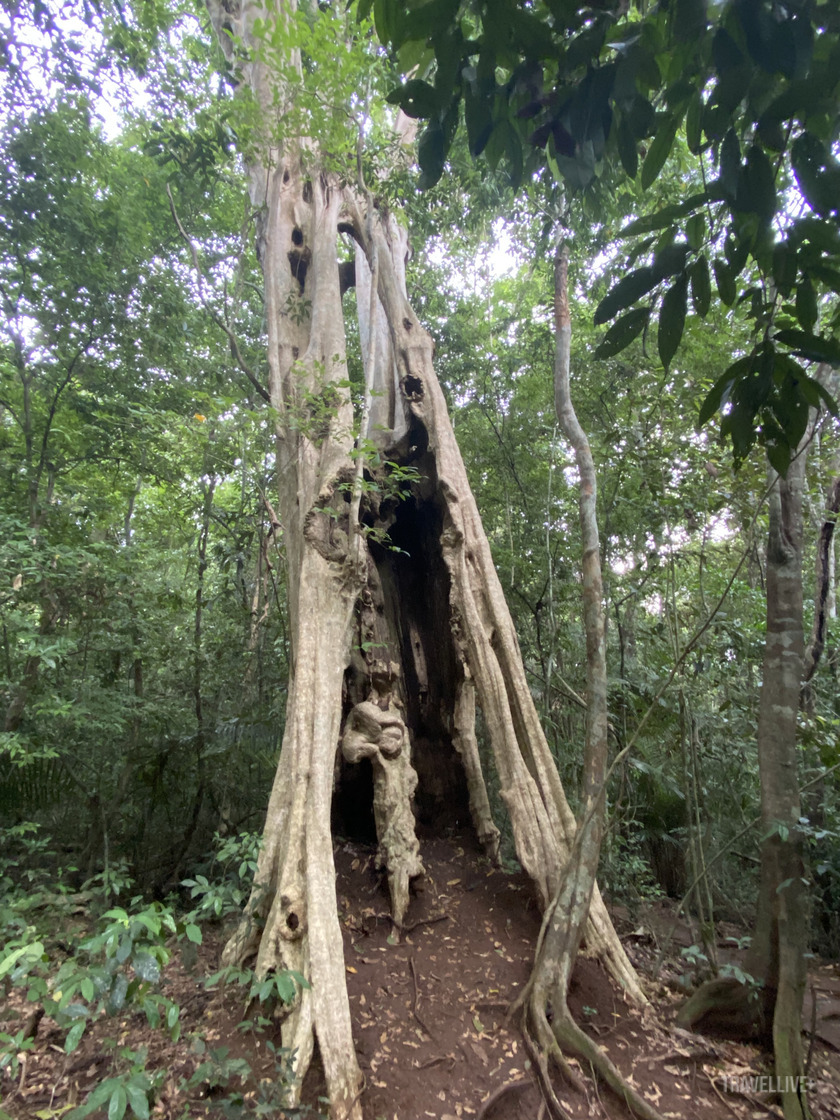
Near the Cat Tien National Park management area, there are two rows of houses like this, villa/homestay style built for guests to rent during their vacation. Each villa is named after a tree/flower or bird/animal, very cute. Some villas have very chill entrances.
Leaving Nam Cat Tien, getting on the bus back to Saigon to catch the Sunday evening flight back to Hanoi, I still had the same feeling of joy and elation of “a day worth living”, of the first time I had a whole afternoon of forest bathing on a weekend with “absolutely beautiful” weather.
Still the same feeling of floating when cycling in Cat Tien forest early Sunday morning, the whole body is soaked with the scent of grass, trees and flowers still lingering in the pristine dawn, breathing in the pure oxygen from day to day, year to year; the vision is not limited by any signs or electronic devices, freely watching the blue sky and white clouds, freely wandering with the wind on each treetop, each patch of forest and grassland shining with the shimmering green color of trees and leaves in the middle of summer under the bright morning sunlight.
It's like forest bathing, complete and covered, drenched in the immense purity of the beautiful, rich green, full of miraculous vitality...







